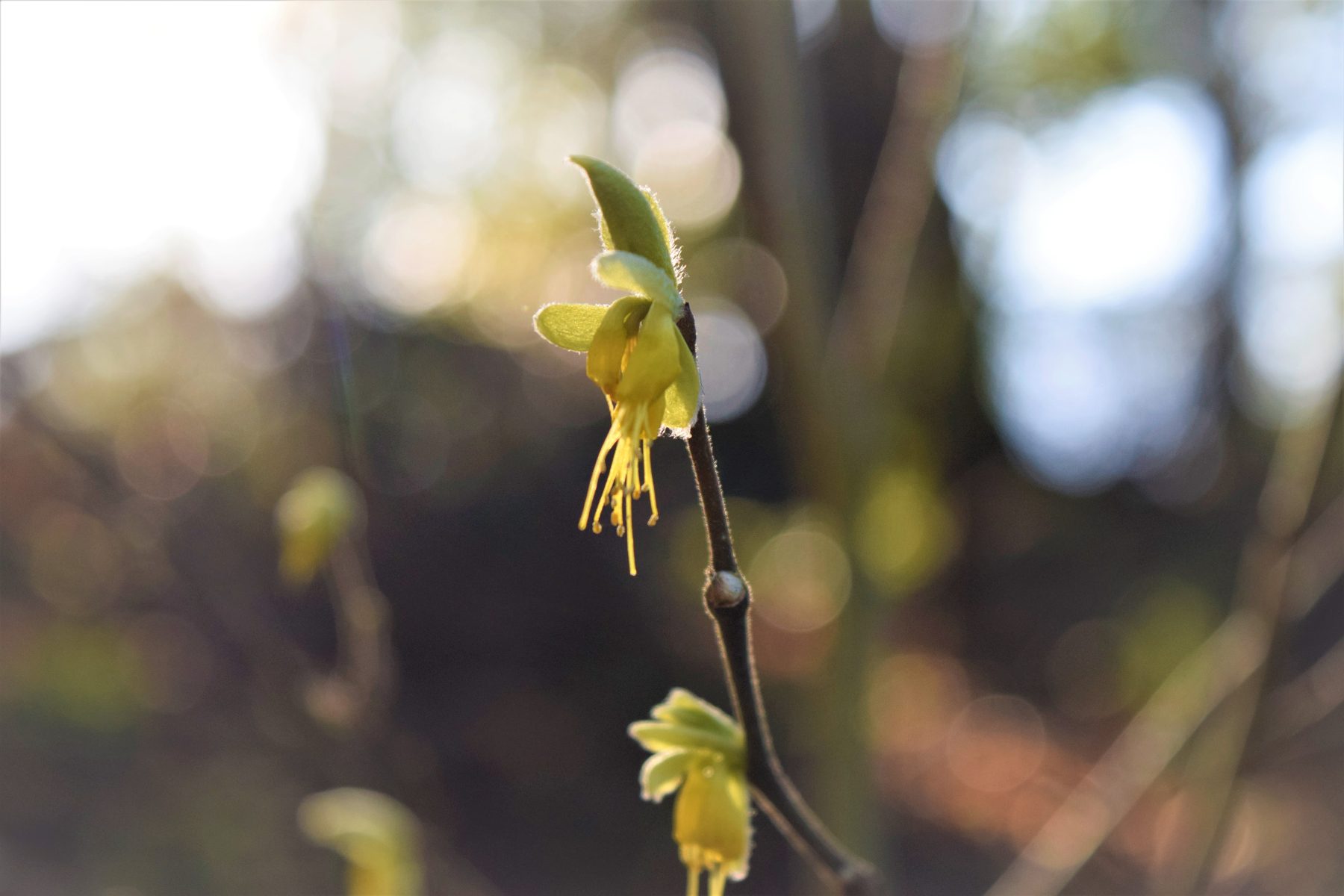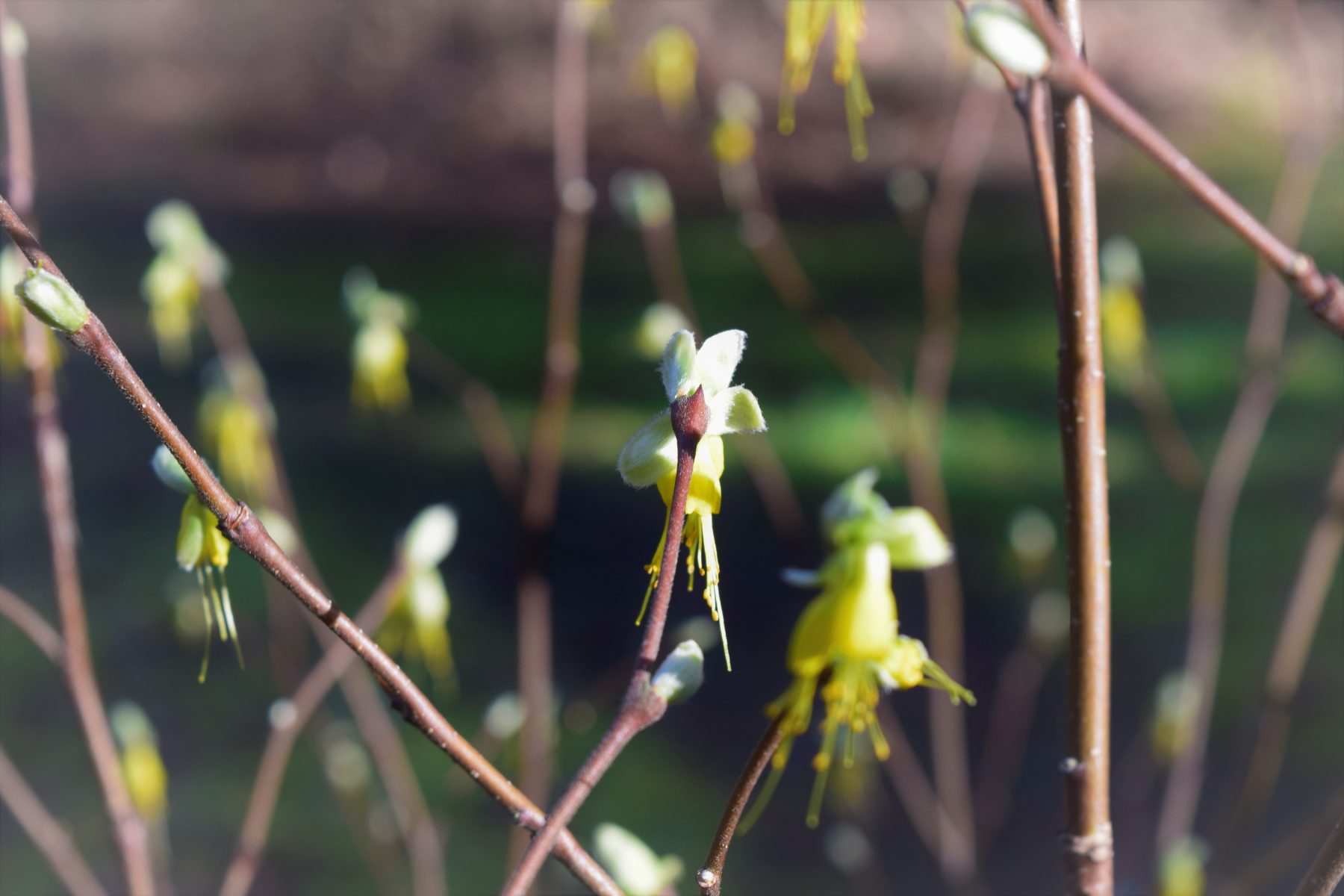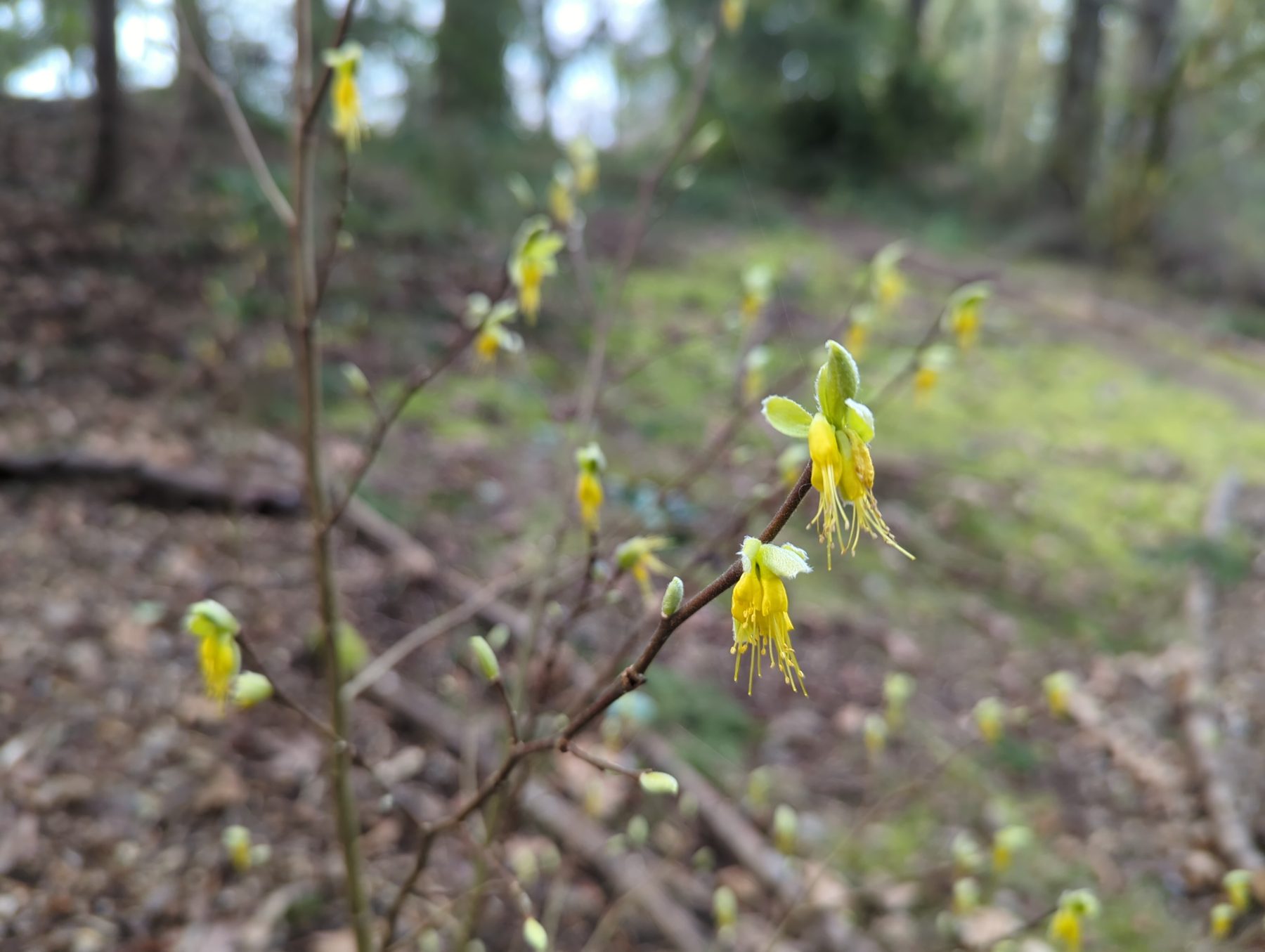April 2023 Plant Profile: Western Leatherwood

Scientific name: Dirca occidentalis
Common name: Western leatherwood
Family: Thymelaeaceae
Conservation status: Imperiled – At high risk of extinction or elimination due to very restricted range, very few populations, steep declines, or other factors
In the Arboretum: Grid 27-3W
As Spring arrives, we here in the Pacific Northwest are gifted the opportunity to observe a wide variety of plant species we may not have noticed before. This month, we are focusing in on a beautiful, rare, San Francisco Bay-area endemic shrub. Dirca occidentalis can be found in the Washington Park Arboretum, but wait… what is it doing here?
This plant was first introduced to the area by William R. Graves, Dean of the Graduate College & Professor for the Department of Horticulture at Iowa State University. Graves explains that the trial was established in spring of 2010: “when 104 seedlings were installed at the arboretum site… [With] four rows of 26 seedlings per row.” Now only 18 Dirca remain along the incredibly mossy (more specifically Hypnum cupressiforme–commonly known as Cypress leaved plait moss) Honeysuckle Hill, between the Viburnums, along the Arboretum Loop trail and Azalea Way. “This location was chosen due to the slope. Dirca are typically found on slopes in the wild–presumably this is due to a need for good soil aeration [as well as] drainage,” Graves elaborates.
 It can be easy to miss these small, beautiful shrubs, yet upon closer observation one might begin to notice their unique details. Hairy stems and Magnolia-like tufts protecting their dainty flower (called “bud scales”) act like a fur coat in the cold during dormancy. They can bloom anywhere from January to March, but this year, with a cold spell here in Seattle, they’ve only begun to emerge at the beginning of March. After the blooms have finished, their leaves start to form in a broad ovate form alongside the fruit. The fruit is similar to a miniature butternut squash and glabrous or smooth/ bald texture.
It can be easy to miss these small, beautiful shrubs, yet upon closer observation one might begin to notice their unique details. Hairy stems and Magnolia-like tufts protecting their dainty flower (called “bud scales”) act like a fur coat in the cold during dormancy. They can bloom anywhere from January to March, but this year, with a cold spell here in Seattle, they’ve only begun to emerge at the beginning of March. After the blooms have finished, their leaves start to form in a broad ovate form alongside the fruit. The fruit is similar to a miniature butternut squash and glabrous or smooth/ bald texture.
The importance of trying to maintain certain species outside their native range has been a frequent topic of discussion, as our changing climate continues to challenge species such as Dirca. Endemic species are quite vulnerable across the globe and arboretums across the globe intend to document and maintain these species. This species has a low fruit set–meaning they may not have many seeds per fruit–so it’s quite an incredible journey our particular specimens have undergone.
We will continue our Arboretum mission, of being a living museum, maintaining these study plantings. Perhaps we will do some experiments of our own with the remaining species, or with cuttings from them, in locations within different light variables. I hope this inspires someone to go and check out the Dirca occidentalis at the Arboretum.

References:
https://www.uaex.uada.edu/yard-garden/resource-library/plant-week/leatherwood-1-7-11.aspx
https://ucjeps.berkeley.edu/eflora/eflora_display.php?tid=23143
https://flowersofmarin.com/category/native/page/8/
https://jrbp.stanford.edu/research/projects/determinants-distribution-and-reproductive-success-dirca-occidentalis